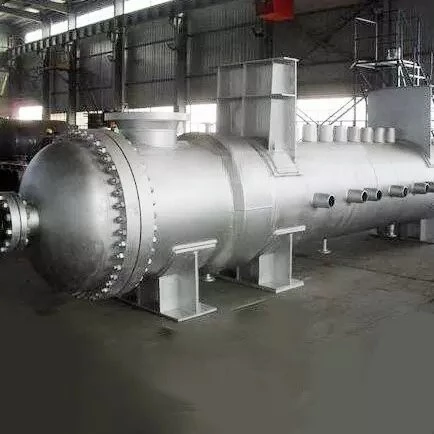Several Protective Measures for Maximizing Heat Exchanger Performance
Efficient heat exchanger design and operation are crucial for maximizing performance and extending the lifespan of equipment. This article outlines practical process design considerations, the use of corrosion-resistant materials, and effective protective measures to ensure optimal heat exchanger functionality.

1. Practical Process Design
To enhance heat exchanger efficiency, consider the following process design tips:

1. Practical Process Design
To enhance heat exchanger efficiency, consider the following process design tips:
- Position steam on the tube side to prevent high-speed gas passage through the shell side.
- Incorporate multiple entries on the shell side to buffer pressure in high-flow conditions.
- Install an impingement plate to reduce erosion and corrosion caused by high-speed fluids.
Additionally, adopt double-side butt welding and continuous welding to avoid residual liquid and sediment retention. Heat treatment of cold-worked and welded parts can eliminate residual stress, preventing stress corrosion.
2. Corrosion-Resistant Materials
The choice of materials significantly impacts the heat exchanger's longevity. While corrosion-resistant materials like Hastelloy, titanium, titanium alloy, and copper offer extended service life, their high prices and manufacturing costs should be considered.
3. Electrochemical Protective Measures
Implementing electrochemical protective measures can prevent stress corrosion cracking and curb crack expansion. Explore the following methods:
2. Corrosion-Resistant Materials
The choice of materials significantly impacts the heat exchanger's longevity. While corrosion-resistant materials like Hastelloy, titanium, titanium alloy, and copper offer extended service life, their high prices and manufacturing costs should be considered.
3. Electrochemical Protective Measures
Implementing electrochemical protective measures can prevent stress corrosion cracking and curb crack expansion. Explore the following methods:
- Cathodic Protection: An expensive method using external DC power to turn the anode into a cathode.
- Anodic Protection: Connecting the equipment to the anode of the power supply to form a passive film on the metal surface.
4. Adding Corrosion Inhibitor
In corrosive media, adding small amounts of substances can significantly reduce corrosion without affecting production processes. Control stress corrosion by removing dissolved oxygen and oxidants, and regulate chloride ion and sulfur density in the media.
5. Anti-Corrosion Coating
Cost-effective and widely used, coating the metal surface with a corrosion-resistant layer prevents direct contact with corrosive media. Most coatings are organic polymer solutions.
6. Heat Exchanger Operation
Optimize heat exchanger operation with the following practices:
- Fill the container with low-temperature fluid before injecting high-temperature fluid to minimize thermal expansion differences.
- Use dry compressed air to remove fluids after turning off, minimizing pressure and preventing stress corrosion.
- Keep upper and lower water valves fully open during operation to maintain flow speed and prevent corrosion from residual impurities.
Implementing these best practices in heat exchanger design and operation ensures efficiency, durability, and extended service life, ultimately reducing maintenance costs and enhancing overall system performance.

